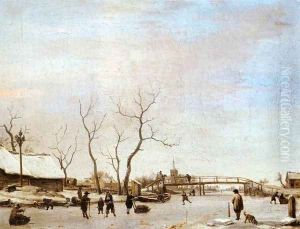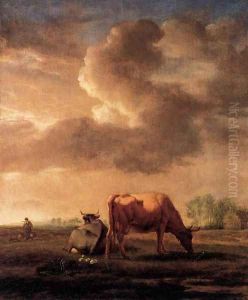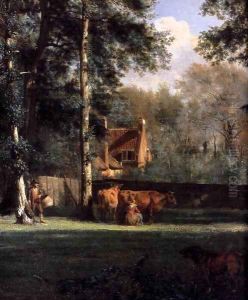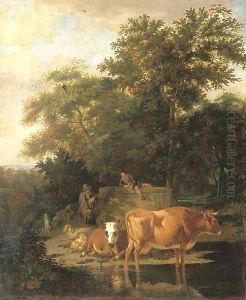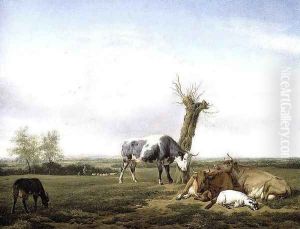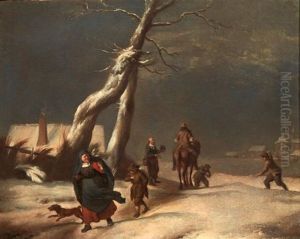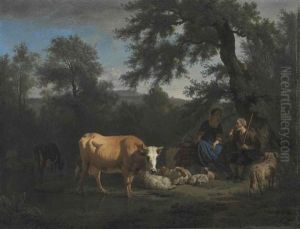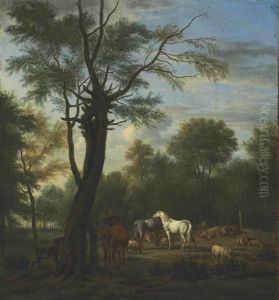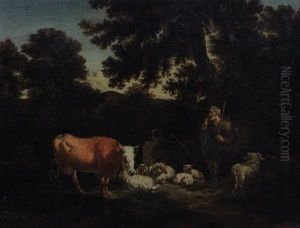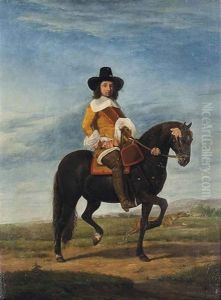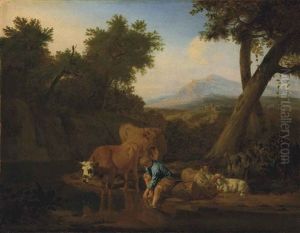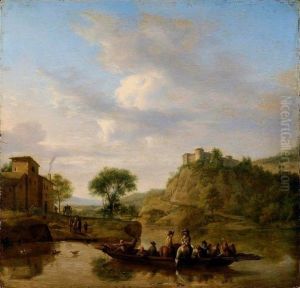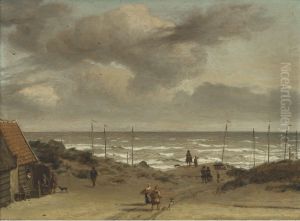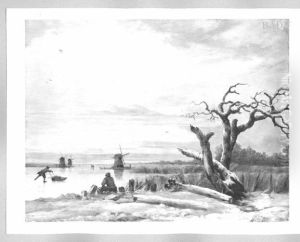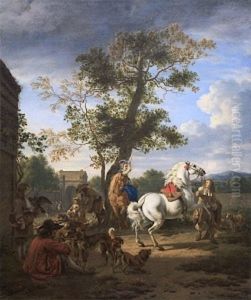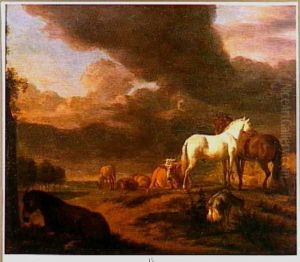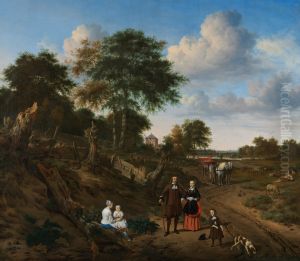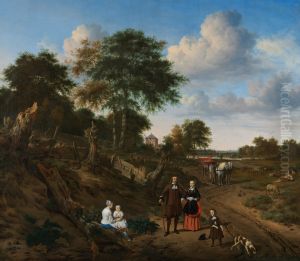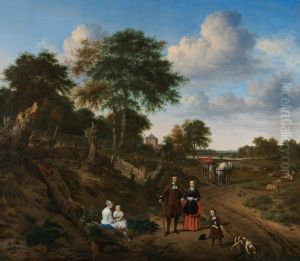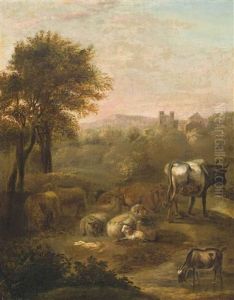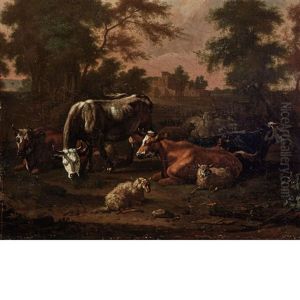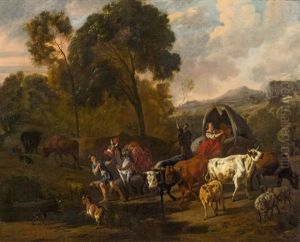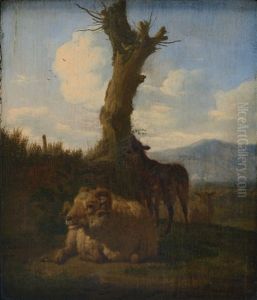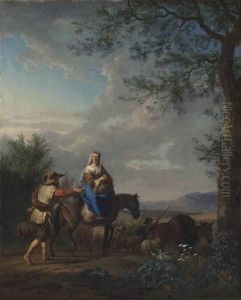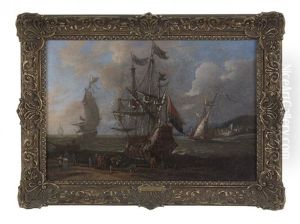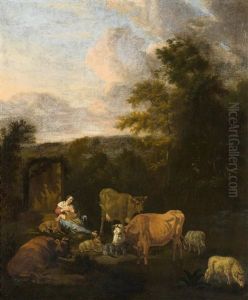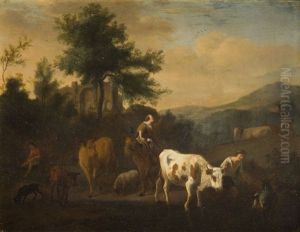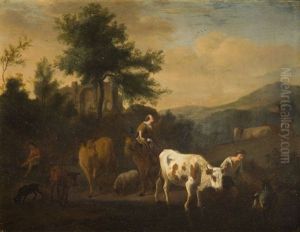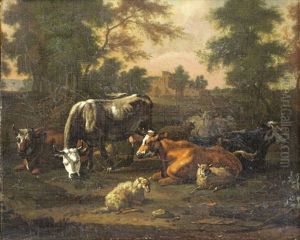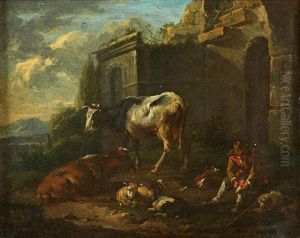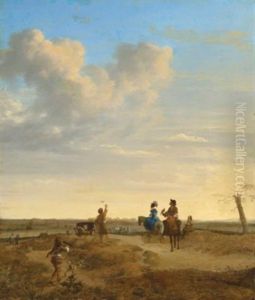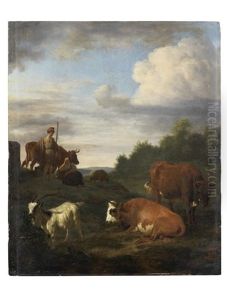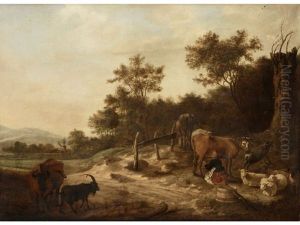Adriaen Van De Velde Paintings
Adriaen van de Velde was a Dutch animal and landscape painter, son of Willem van de Velde the Elder and brother of Willem van de Velde the Younger, who were both marine painters. Born in Amsterdam, he is recognized as one of the most accomplished landscape painters of the Dutch Golden Age, a period in the 17th century during which Dutch art, science, trade, and the military were among the most acclaimed in the world.
Van de Velde's work is characterized by his meticulous approach and serene scenes, often depicting pastoral landscapes with cattle and figures. His attention to detail and ability to evoke atmosphere were remarkable for his time. Unlike many of his contemporaries who focused on grander historical or mythological scenes, van de Velde found beauty and significance in everyday rural life. This was reflected in his careful study of animals, especially sheep and cows, which he rendered with a sensitivity that has led to his recognition as one of the finest animaliers (animal painters) of his era.
Despite his relatively short life, van de Velde was highly productive and influential. He was not only a painter but also a skilled etcher, and his works were in high demand during his lifetime. His paintings exhibit a fine use of color and light, and he was adept at creating a harmonious and balanced composition. Van de Velde's work had a lasting impact on the development of landscape painting in the Netherlands and beyond.
Sadly, Adriaen van de Velde died at the young age of 35. The cause of his death is not well-documented, but his legacy lives on through his exquisite and tranquil depictions of the Dutch countryside. His works can be found in the collections of many major museums around the world, and he remains a respected figure in the study of Dutch Golden Age painting.
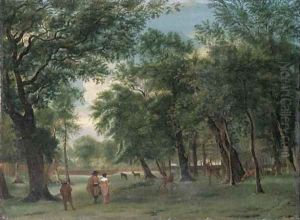
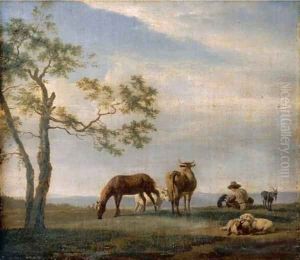
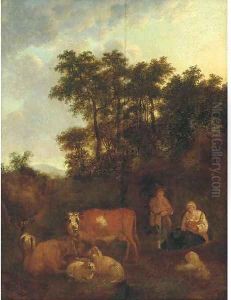
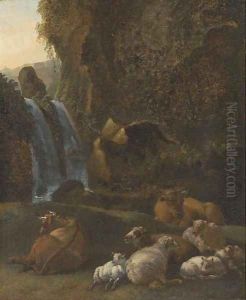
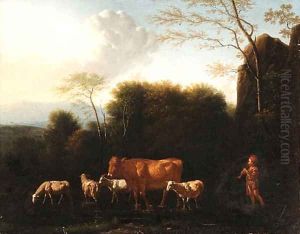
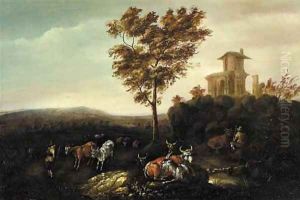
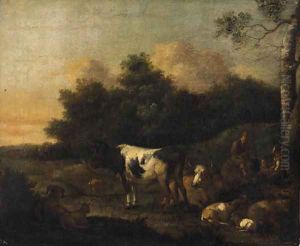
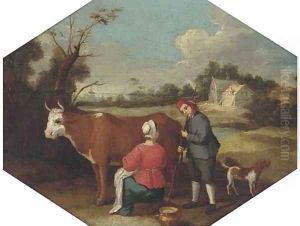
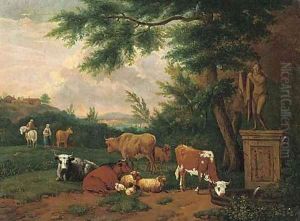
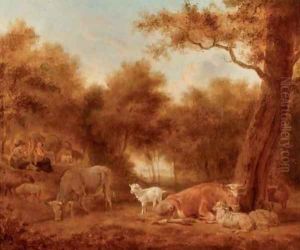
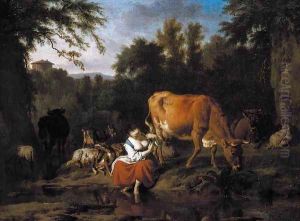
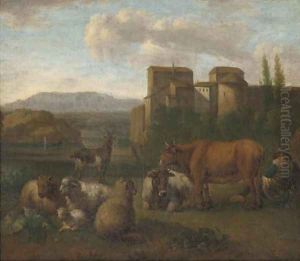
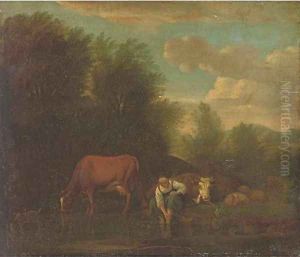
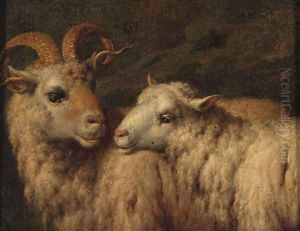
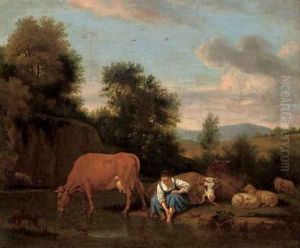
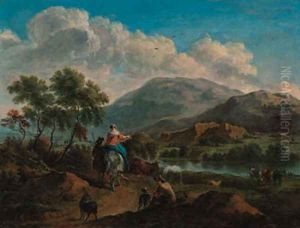
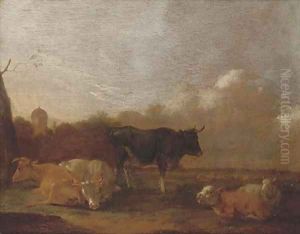
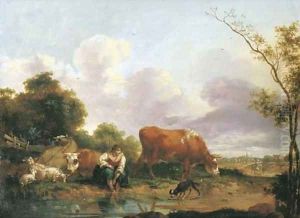
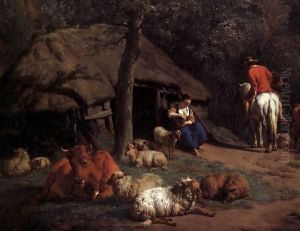
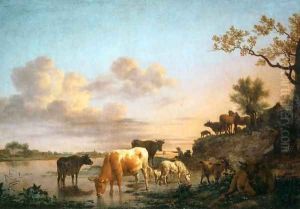
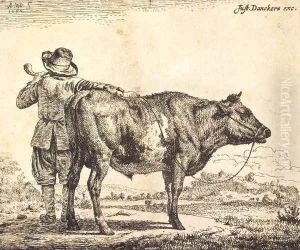
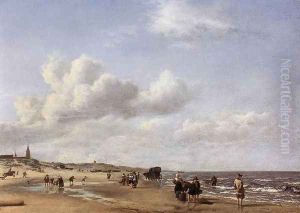
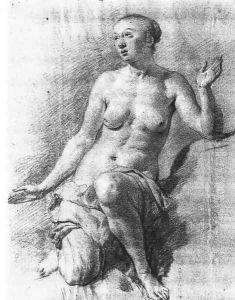
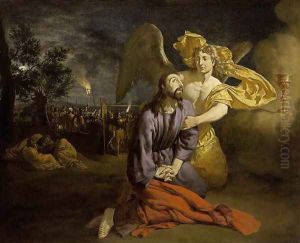
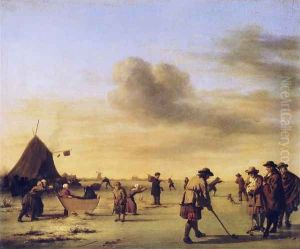
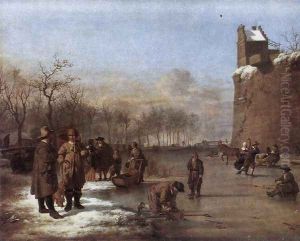
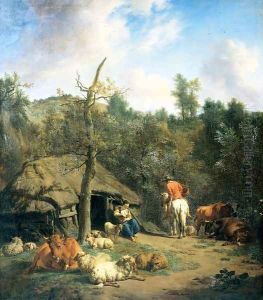
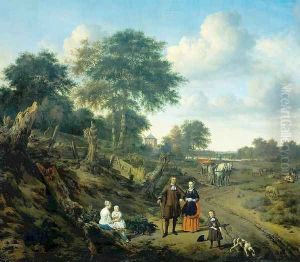
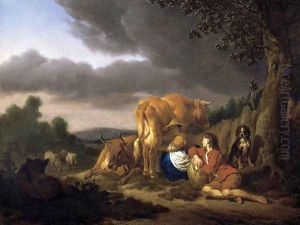
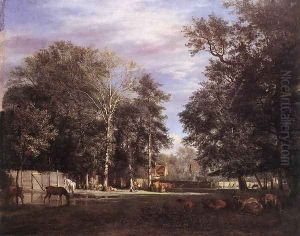
![The Hut [detail #1]](https://www.niceartgallery.com/imgs/301606/s/adriaen-van-de-velde-the-hut-detail-1-9c522c7a.jpg)
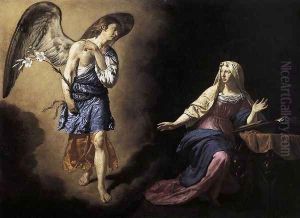
![Family Portrait in a Landscape [detail #1]](https://www.niceartgallery.com/imgs/301608/s/adriaen-van-de-velde-family-portrait-in-a-landscape-detail-1-82f3aec.jpg)
